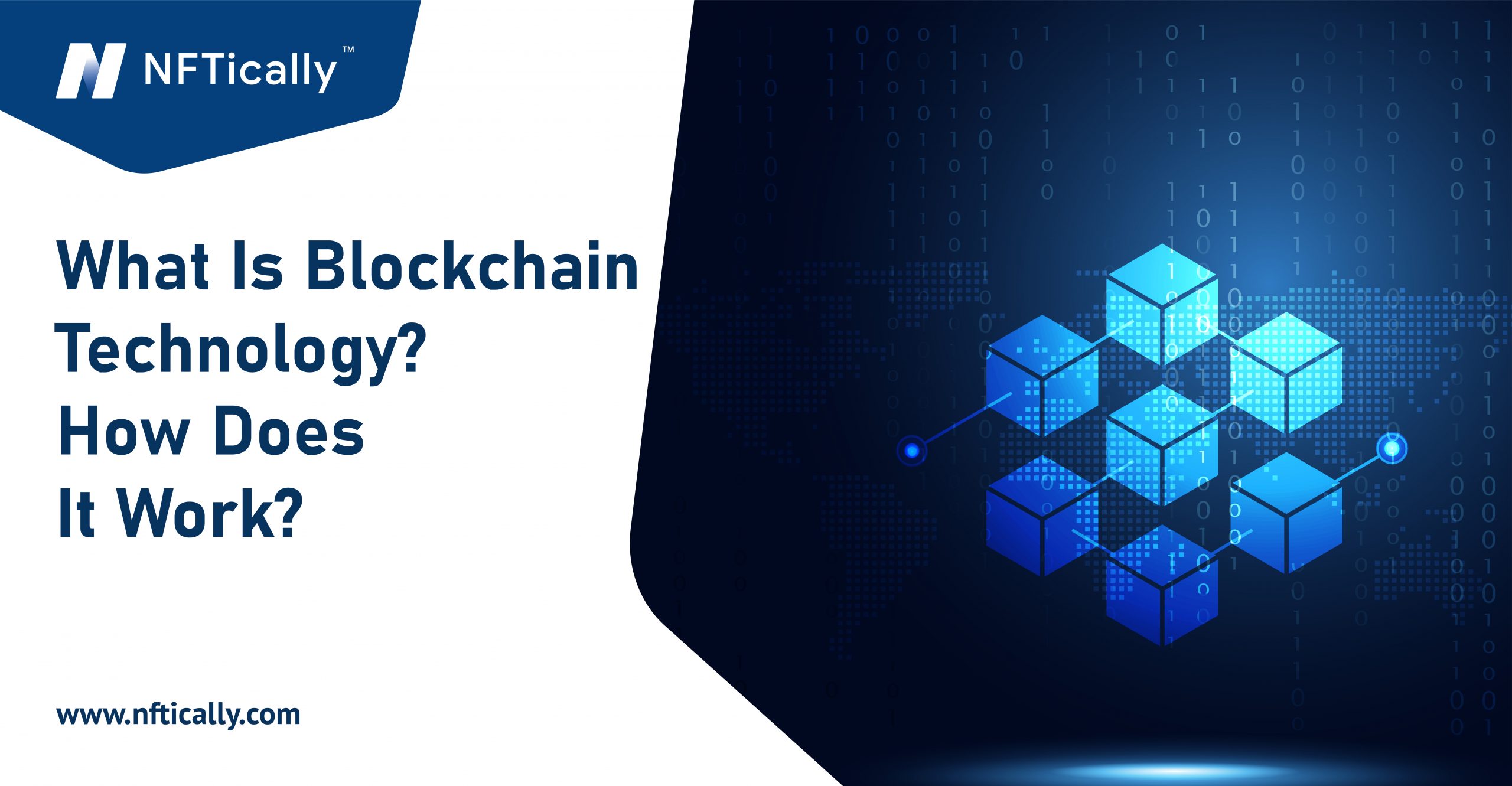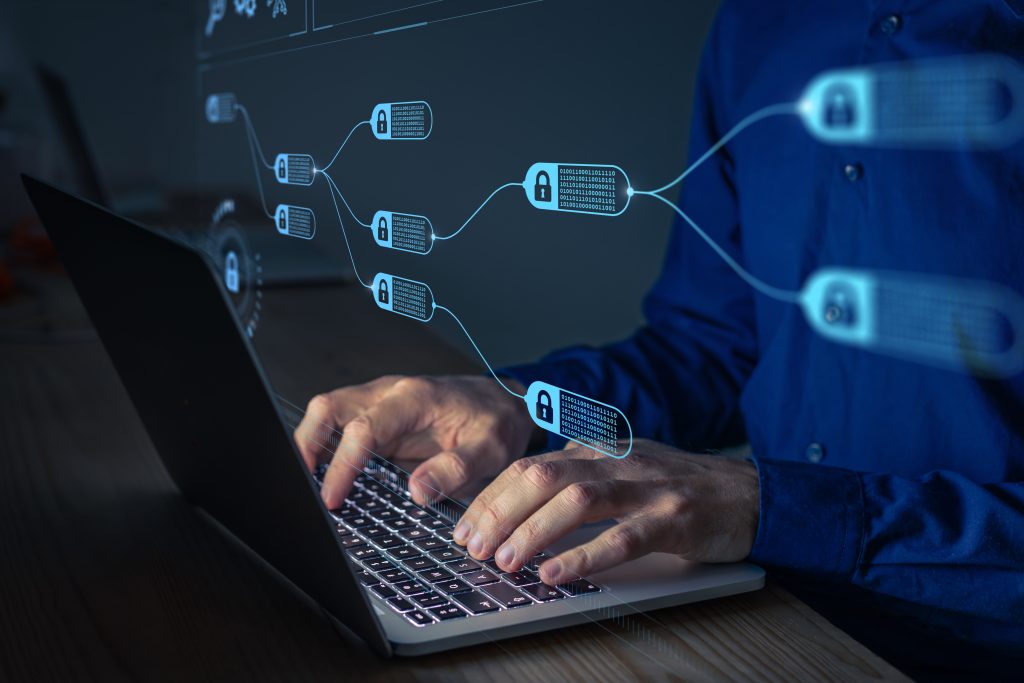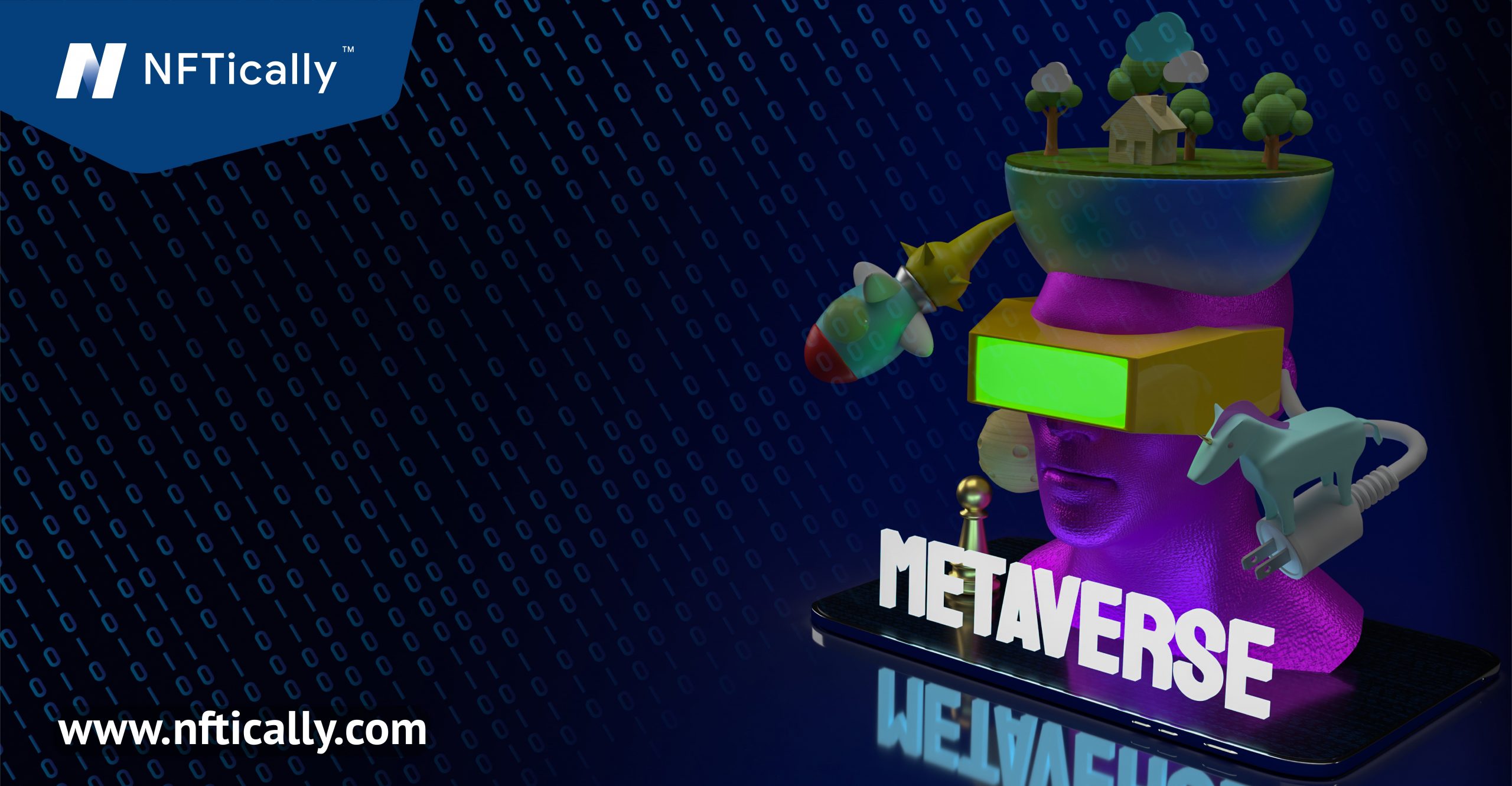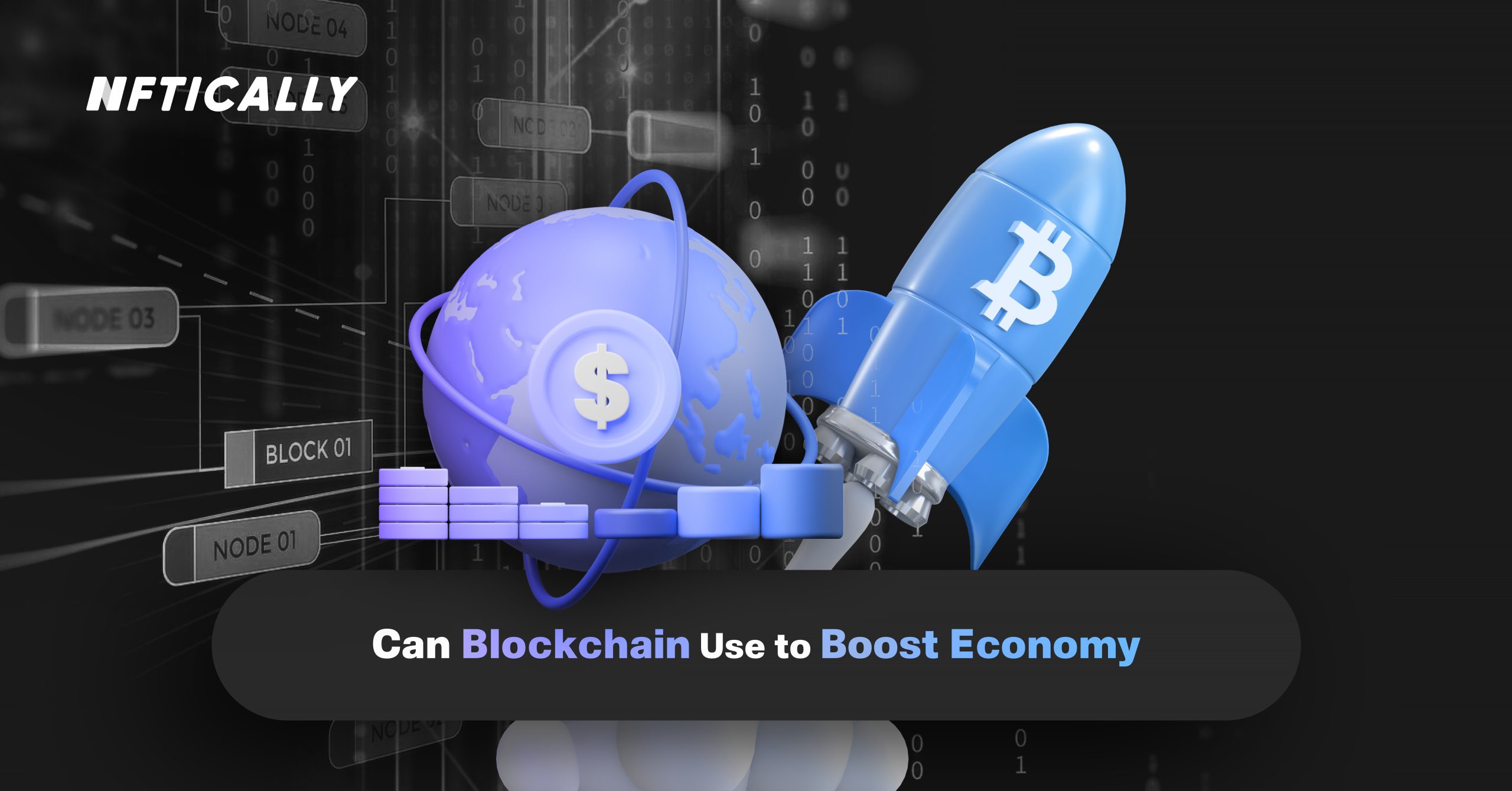- Blockchain Technology Digital Art
- September 21, 2021
What Is Blockchain Technology? How Does It Work?

Although blockchain first came about in 2008, it is a relatively new technology. Since the adoption of cryptocurrency, specifically Bitcoin, Blockchain has got everyone talking. So, how does the revolutionary technology of blockchain work?
What is Blockchain Technology?
Blockchain is a ledger technology that digitally records and distributes data across a network of computers. Specifically, a Distributed Ledger Technology, or a DLT. A DLT uses cryptographic hashing to record the transactions of digital assets. Moreover, with the help of decentralization, the recorded history of these digital assets becomes unalterable.
In other words, a blockchain is a database that chains encrypted blocks of data together to form a chronological ledger for data. Decentralization allows a transparent distribution of assets. As well as, real-time access to the public. Because of this transparency, the authenticity of the assets is preserved.
In simpler terms, we can compare a google document to the blockchain, for instance. When you share a google doc with a group of people, the same document is distributed. It is not copied or transferred. Instead, everyone has access to the same file. Therefore, everyone can make changes, and these changes are recorded and visible to everyone with the link.
Blockchain technology is a lot more complex than this, obviously. Furthermore, blockchain’s inherent security measures reduce risks and scales transparency for every sector.
How does Blockchain Technology work?

Blockchain technology lets parties interact with each other without a middleman such as a bank or the government. It does so through three components.
Blocks
Every chain features multiple blocks and every block includes three elements:
- The data contained inside the block
- A 32-bit whole number randomly generated during block creation, is called the nonce.
- And the block header attached to the nonce is a 256-bit number called hash.
Unless the block is mined, the data in it is forever wedded to the two components.
Miners
Speaking of mining, miners are the ones who create the blocks on the chain.
In a blockchain network, every block has a particular nonce and hash. However, the hash follows a chronological order, referencing the hash of the prior block in the chain. Hence, it is quite difficult to mine blocks, especially on a larger chain.
That’s why miners use special software to solve tremendously complex mathematical problems to generate an acceptable nonce and hash. Since the nonce is only 32 bits, while the hash is 25 bits, there are four billion possible nonce and hash combinations that are mined before the correct combination is found. The miners call the right combination “the golden nonce”. And the block containing the nonce is added to the chain.
Remember when you were a kid and you’d mess up one calculation in a math problem during an exam? Now, to change the current issue, you’d have to redo all the calculations leading up to the original mistake.
That is pretty much how changing a block would look like. Except, it is exceptionally difficult to re-mine a block as finding the golden nonce requires incredible computing power and an enormous amount of time. As a result, editing blockchain technology is extremely unfavorable.
Nodes
As previously mentioned, blockchain is built on the concept of decentralized. A blockchain network belongs to no one organization. Therefore, the nodes present in the chain distribute the digital ledger across a network of computers.
Nodes are electrical devices that maintain copies of the blockchain and every node has its individual copy. Additionally, nodes are meant to keep the network functioning by algorithmically approving any newly minted blocks that are to be added to the chain.
Because blockchains are transparent, every user is provided with a unique alphanumeric identification number to monitor their transactions. Collaboration of visible public information while also safeguarding user anonymity, issues trust amongst its members.
Blockchain for cryptocurrency

Cryptocurrency is blockchain’s most popular use. In brief, cryptocurrencies are digital currencies that are used to purchase things online. For example, your next grocery run or a vacation in the Bahamas. However, unlike cash, the transactions made through cryptocurrency are recorded and secured.
Roughly 6,700 cryptocurrencies exist right now around the world worth a market capitalization of over $1.6 trillion. Bitcoin among these being the most famous and powerful. Presently, one single bitcoin is worth about 45 thousand US dollars.
Cryptocurrency relies on blockchain technology for security. Given that unique identifications are attached to every user, theft is a lot harder to execute. Another major reason, blockchain-based cryptocurrency is more efficient is due to its lack of a centralized system. Money from everywhere can be sent anywhere without interference or banks.
Conclusion
NFTically is a Non-Fungible Tokens trading platform. With us, in just a matter of minutes, you can now open your store. NFTically allows minting, selling as well buying options. All you require is to set up a wallet, build your collections, put in your NFTs (which can be an image, song, video clips, etc.), and at last, list those NFTs up for sale.
Related Posts

The Metaverse: What It Is, Where to Find it, Who Will Build It
All About Metaverse The Metaverse is the hypothesized next iteration of the internet? Or the day when you created your first Facebook account? Wasn’t the experience joyful, happy? All of your questions addressed with a few…
- March 7, 2023

Can Blockchain Use to Boost Economy
Global GDP might rise by $1.76 trillion over the next decade as a result of blockchain technology, according to an analysis. Based on current technological use, Blockchain has the potential to have a significant impact…
- June 14, 2022
Recent Posts
- Revolutionizing AI Clones: Sunny Leone Teams Up with Kamoto.AI for an Unprecedented Debut
- The Evolving Landscape of NFTs: A Glimpse into 2024
- NFT Trends to Shape 2024: A Deep Dive into the Future of Digital Assets
- The Gaming Revolution: NFTs Level Up the Player Experience
- NFTs and Intellectual Property Rights: Navigating Legal and Ethical Challenges
Recent Comments
Archives
- January 2024
- December 2023
- November 2023
- October 2023
- September 2023
- August 2023
- July 2023
- June 2023
- May 2023
- April 2023
- March 2023
- February 2023
- January 2023
- December 2022
- November 2022
- October 2022
- September 2022
- August 2022
- July 2022
- June 2022
- May 2022
- April 2022
- March 2022
- February 2022
- January 2022
- December 2021
- November 2021
- October 2021
- September 2021
- August 2021
- July 2021
Categories
- $ECOM
- 3D NFTs
- AI Characters
- Airdrpos
- Bitcoin
- Blockchain
- Blockchain Technology
- Buy NFTs
- Buying
- Crypto Collectibles
- Crypto Wallet
- Cryptocurrency
- Cryto Mining
- Digital Art
- Digital Assets
- Ethereum
- FAQs
- Features
- Generative Art Nfts
- ICO
- Invest in NFT
- Learn
- Metavatars
- Metaverse
- Minting
- NFT
- NFT 2.0
- NFT Art
- NFT Art Finance
- Nft auction
- NFT Communities
- NFT Crypto
- NFT crypto art
- NFT Drops
- NFT Games
- NFT gaming
- NFT Marketplace
- NFT Memes
- nft project
- NFT Royalties
- NFT Staking
- nft stocks
- NFT Store
- NFT Taxes
- NFT Trading Cards
- NFT Wallet
- NFTICALLY
- NFTs
- Non fungible tokens
- Non Fungile Tokens
- Ordinal NFTs
- Physical Assets
- Press Release
- Selling
- Solution
- Stablecoins
- Store
- Tensor Nfts
- Top Cryptocurrencies
- Uncategorized
- Web 2.0
- Web 3.0
- white label nft marketplace

